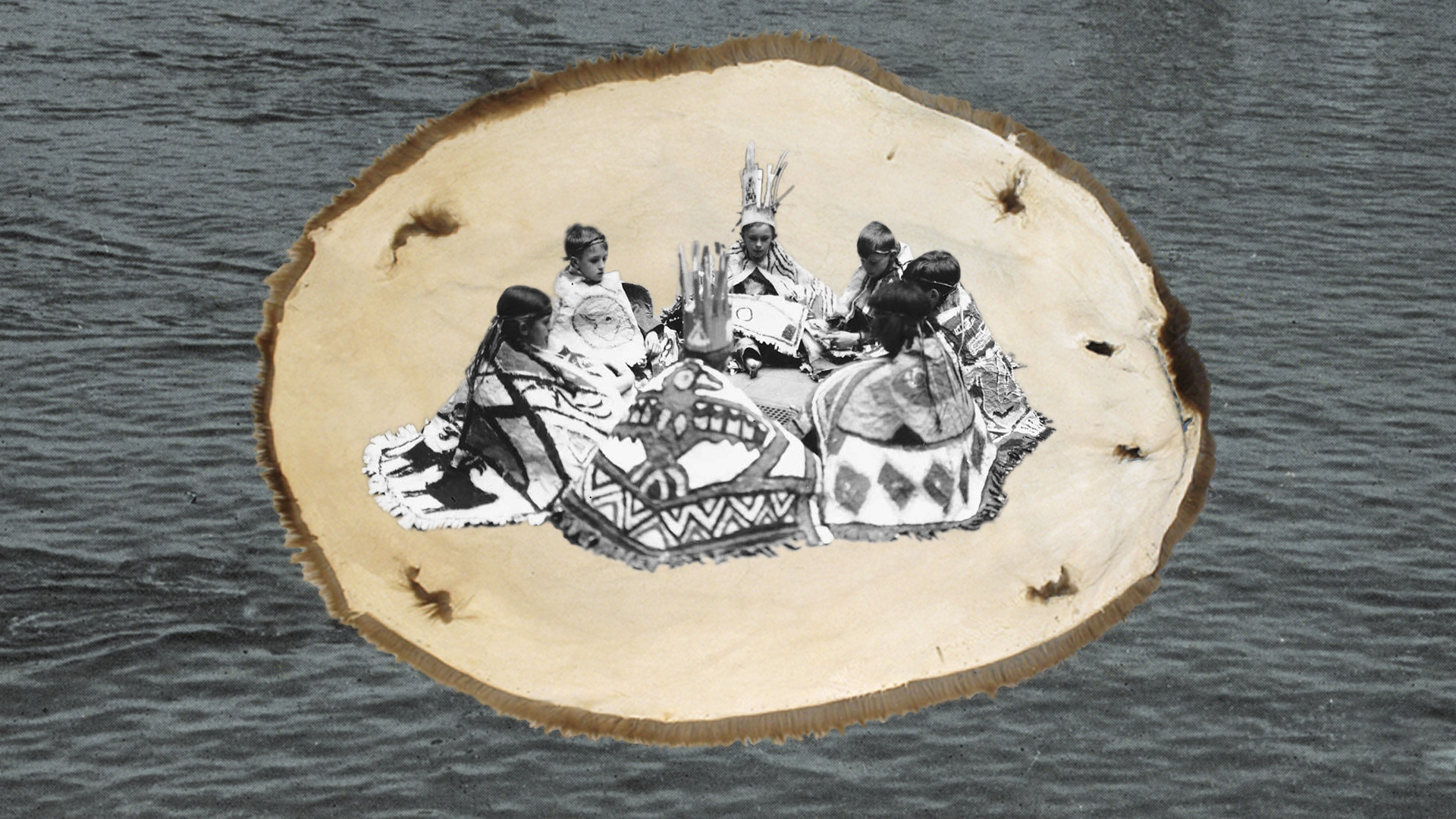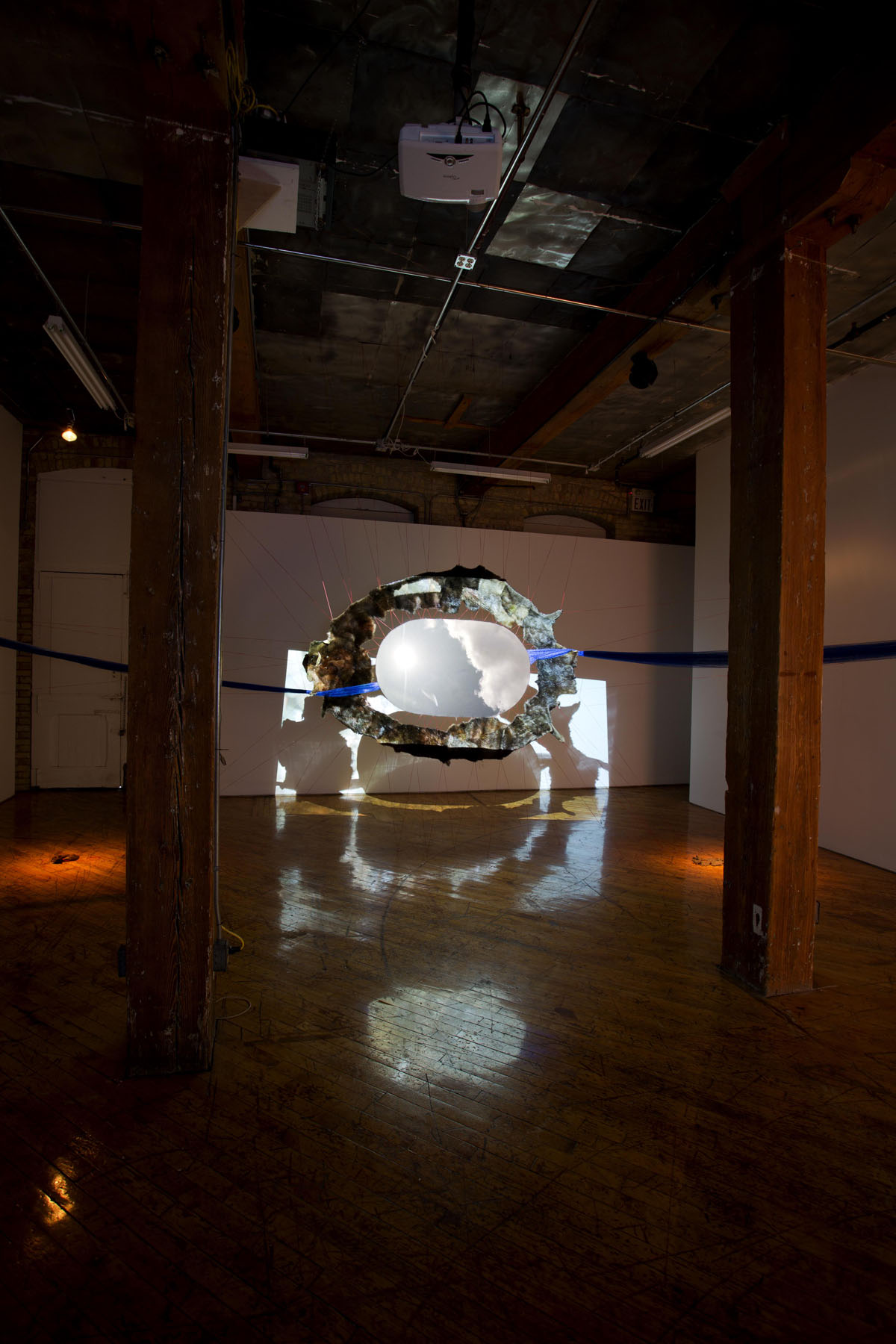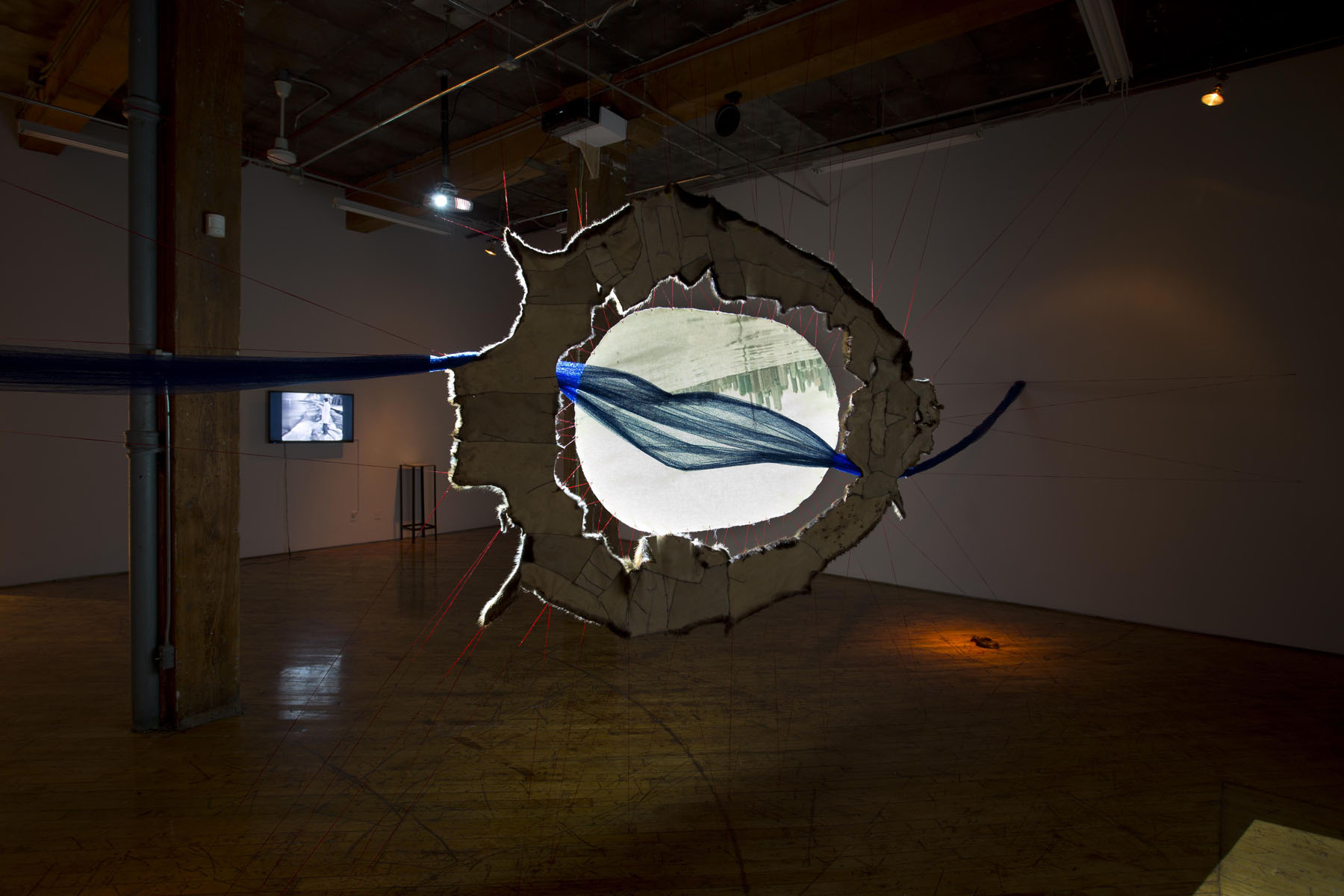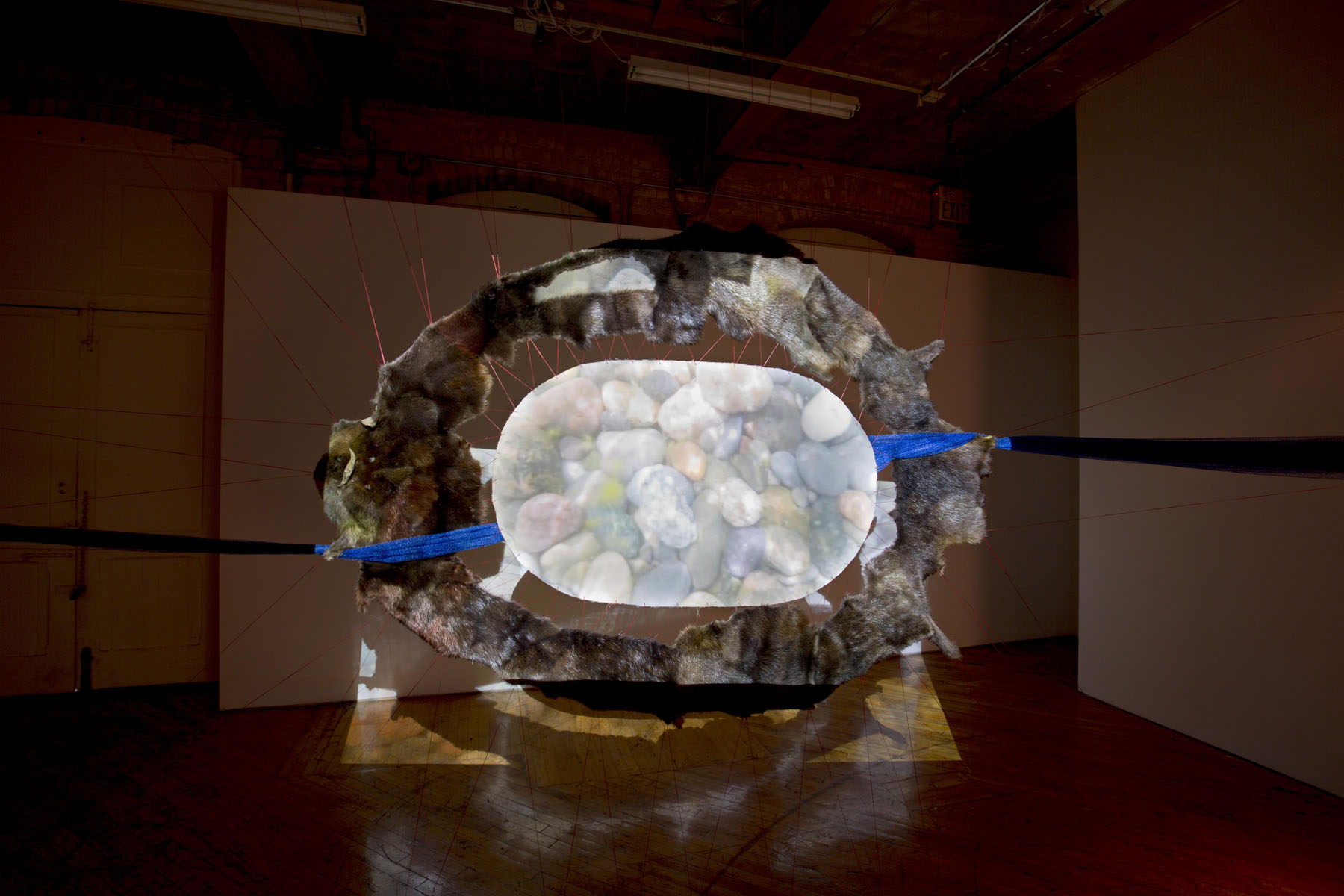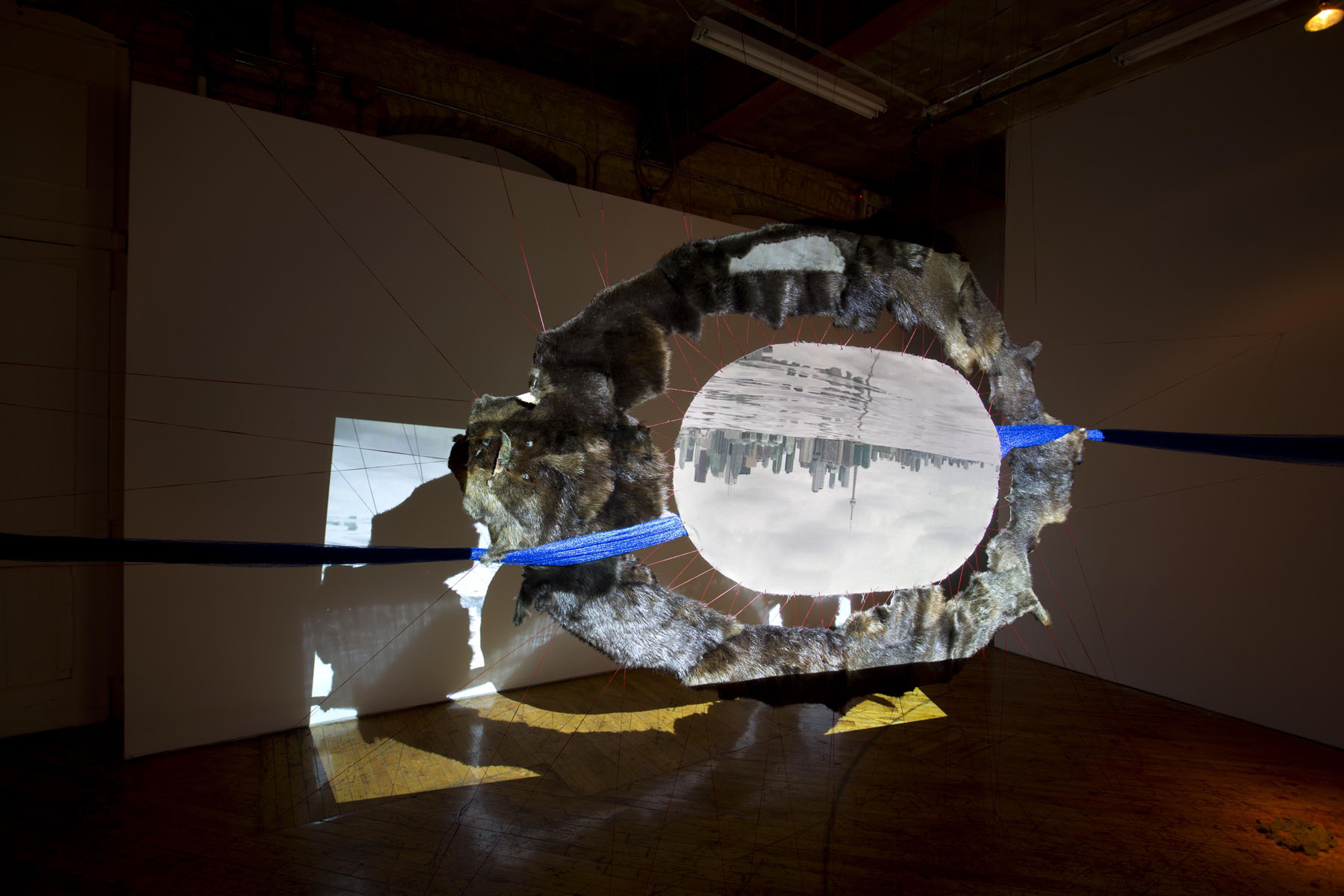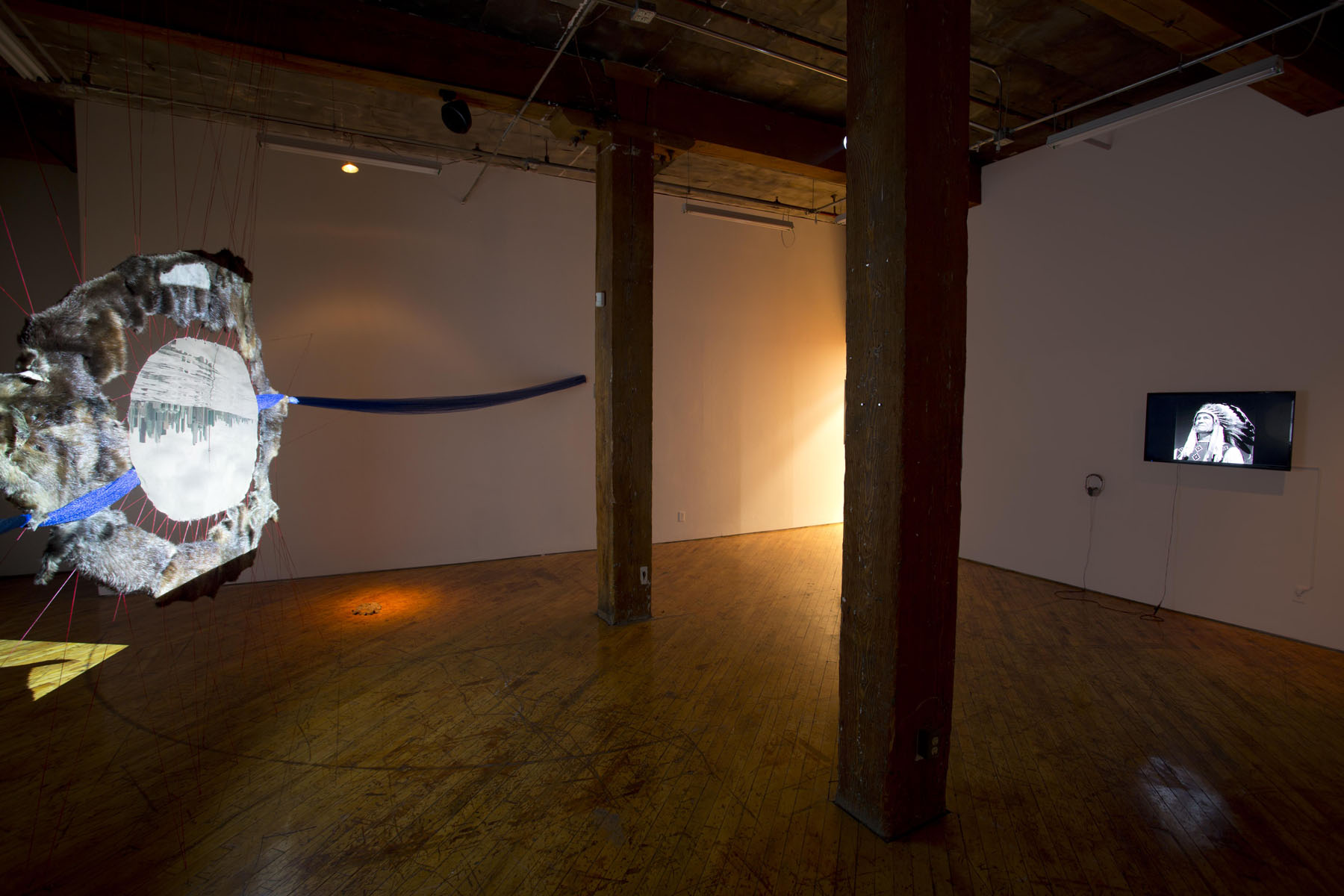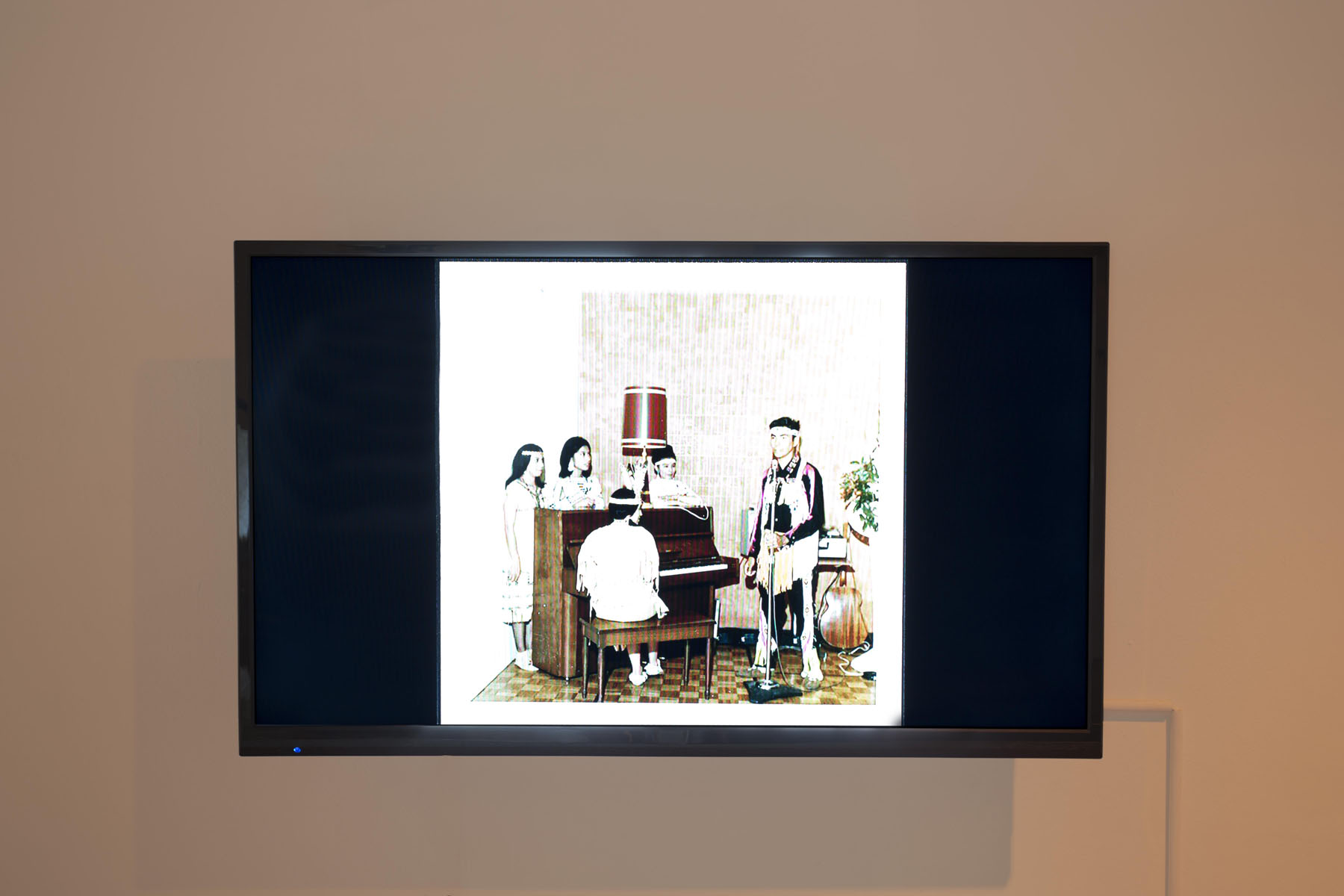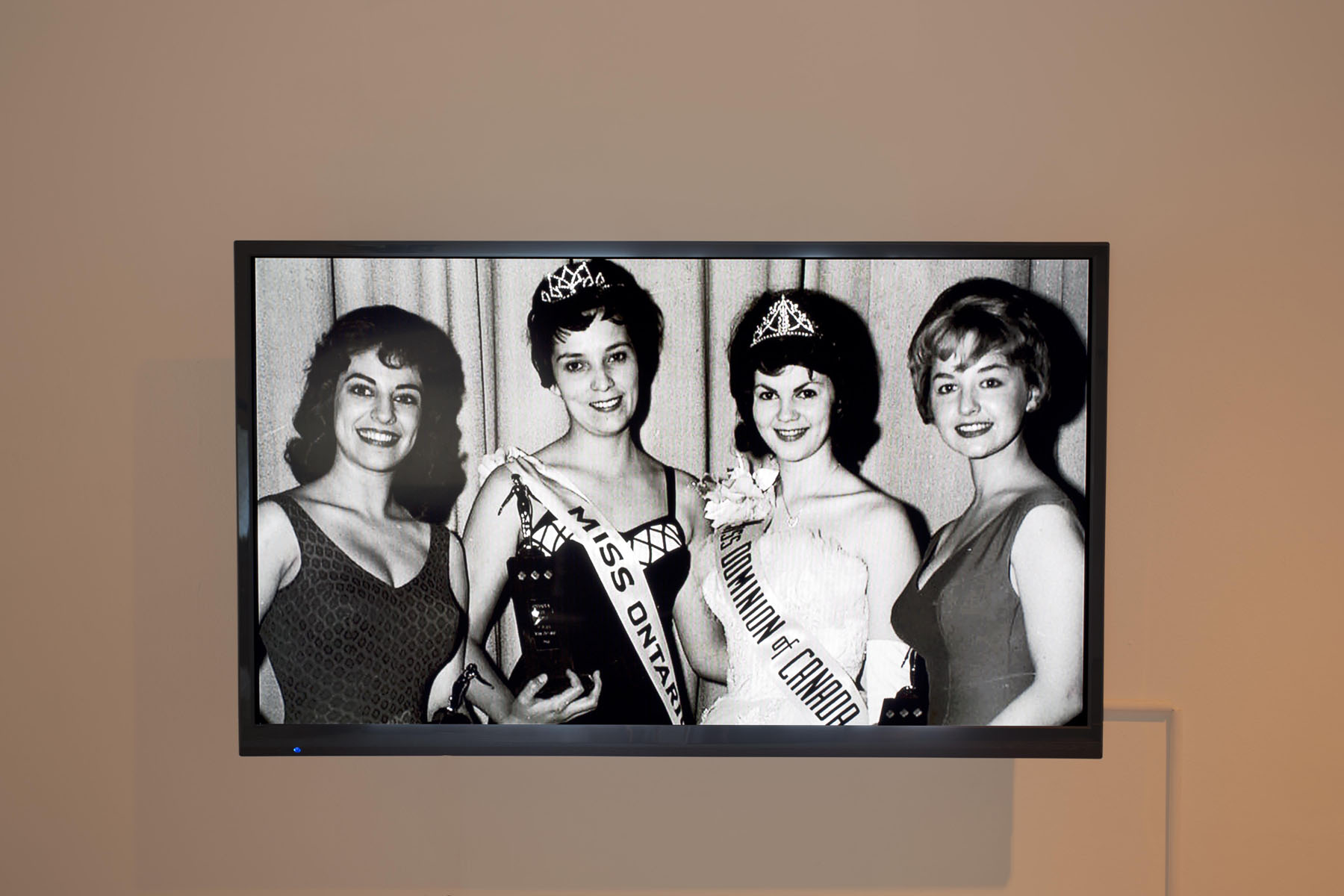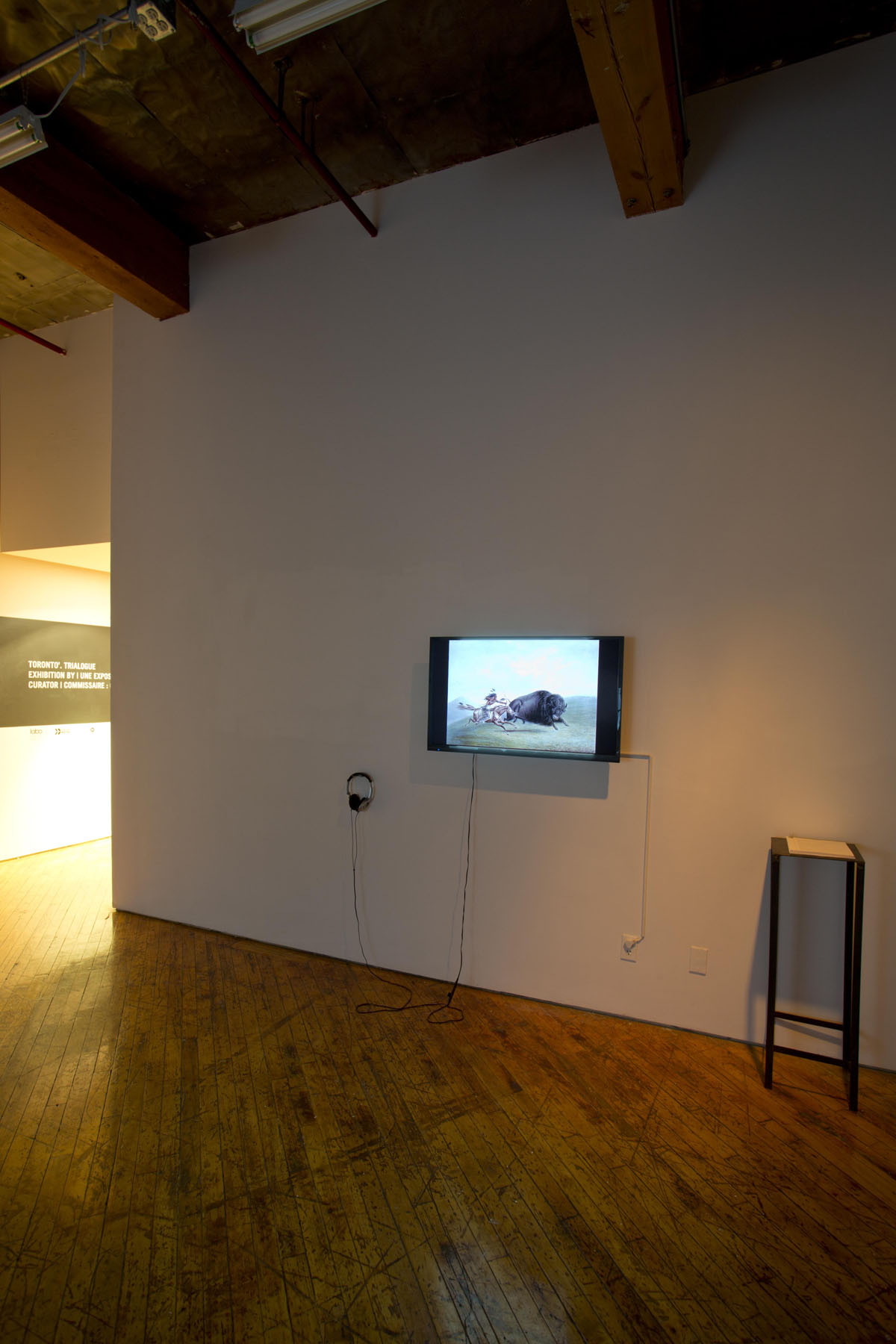The continual occupation of a territory is enriched by multiple memories. Such is the case with Toronto’. Composed of several strata of multiple spirit locations, the First Nations continue to dream and create art about it.
This sizeable area of the city, also known as the place “where trees stand in the water”, remains a site for portages and sharing that also encompasses the powerful ecosystems of the Wendats (Hurons), the Haudenosaunees, the Mississaugas, the Francophones, the Anglophones and all those people along with their descendants, that continue to flock here.
Provided that this includes Great Lake Ontario with its mirrored reflections in the city’s skyscrapers as much it does the thunderous spilling of fresh water from Niagara Falls and the vast networks of rivers that siphon themselves through the plains and to which are grafted many channels of subways, streetcars, bikeways and pedestrian paths.
Despite the prominence of cement and glass and of steel and electrification, the city site was once a vast expanse of land that was the dominion of the Three Sisters (corn, squash and beans) and of tobacco. Along with its trees and green spaces, this natural vitality is fundamental to Toronto’s being. Even still, a fragility remains as the natural spaces continue to be susceptible to the ravages of strong winds, to spontaneous actions like overflowing rivers and even more so, to the joint civic impact that moves through and surrounds this place.
These are the various elements that lend their force to the works created in trialogue between the Abenaki artist Simon M. Benedict, the PekuakamIlnuatsh artist Sonia Robertson and the Wendat curator Guy Sioui Durand. They have been invited by Barbara Gilbert and her team at Le Labo, the only Francophone artist run centre in the city, along with the participation of the YYZ Artists’ Outlet and will be part if the ImagineNATIVE Art Crawl that will take place throughout the 401 Richmond St. W. building.
Not solitary but in solidarity, not two parallel paths but the same path, we therefore present Toronto’. Trialogue, an Indigenous exhibition and artist residency.
——–
L’occupation continue d’un territoire s’enrichit de mémoires plurielles. Tel est Toronto’. Investi de plusieurs strates aux esprits multiples du lieu, des autochtones continuent d’y rêver et de créer par l’art, aujourd’hui.
Ce vaste lieu, « là où poussent des arbres dans l’eau » demeure un sentier de portages et de partages au travers d’un puissant écosystème tant pour les Wendat (Hurons), les Haudenosaunee, les Mississaugas, les Francophones, les Anglophones, ceux qui continuent d’y affluer et leurs descendants. L’imaginaire cosmopolite actuel de cette vaste cité procède pourtant d’une même fluidité d’intranquillité.
Cela tient autant du grand lac Ontario’ que reflète le miroir de verre des gratte-ciels, qu’à la chute Niagara, tonnerre d’eau, lien furieux de déversement entre ces grandes mers d’eau douce, qu’aux réseaux de rivières qui sillonnent cette vaste plaine et auxquels se greffent wagons de métros et de tramways, sentiers de vélos et pédestres.
Malgré une dominance de béton et de verre, d’acier et d’électrification, l’endroit a jadis été une vaste étendue, domaine des trois sœurs (le maïs, la courge et leharicot) et du tabac. Telle est la vivace nature fondamentale de Toronto’, de ses arbres et espaces verts. Leur fragilité reste redevable aux vagues par grands vents, aux débordements ponctuels de ses ruisseaux mais plus encore de la conscience citoyenne commune qui y circulent.
Voilà des pistes d’éléments qui rendent puissantes les œuvres élaborées en trialogue entre l’artiste Abénaqui Simon M. Benedict, l’artiste PekuakamIlnuatsh Sonia Robertson et le commissaire Wendat Guy Sioui Durand. Ils ont été conviés par Barbara Gilbert et son équipe du seul centre d’artistes francophone dans la ville, Le Labo, en complicité avec le centre d’artistes YYZ Artists’ Outlet et l’événement de déambulation dans l’édifice du 401 Richmond mis de l’avant par ImagineNATIVE.
Ni solitaire mais solidaire, ni deux voies parallèles mais ensemble, voici donc Toronto’. Trialogue, la résidence d’artistes autochtones qui s’expose.
Documentation: Allan Kosmajac
Documentation
Artist Bios
Sonia Robertson
Sonia Robertson is an Ilnu artist from Mashteuiatsh who, after completing at DEC in photography went on to complete a bachelors in interdisciplinary art from the Université du Québec in Chicoutimi. She has equally following a few complimentary studies in techniques such as Butoh, working with raw materials, dance perfomance, and poetry to name a few. She recently completed a Masters in Art Therapy from the Université du Québec en Abitibi-Témiscamingue .
Installation, performance art, dance, writing, storytelling and explorations of sound and image are central to her artistic practice. Her work has been exhibition in her community, across Quebec and Canada in addition to exhibitions in France, Haïti, Mexico and Japan.
Simon M. Benedict
Based in Toronto, Simon M. Benedict is an artist working with video, sound, performance, and photo. He repurposes existing audiovisual material and archival documents to explore our relationship to various fictional and historical narrative forms, and their impact on our reading of unmediated reality.
Simon M. Benedict holds an MFA in Studio Art from the University of Guelph (2016) and a BFA with major in photography from Concordia University, in Montreal (2011). His work has been exhibited in Canada, Europe, and the United States, including recently at VU (Quebec City, 2018), Dazibao (Montreal, 2018), NRW-Forum Düsseldorf (2018), Noble Space (Toronto, 2017), and Pushmi Pullyu (Toronto, 2017). He has participated in residencies at Le Labo, the National Film Board, Artscape Gibraltar Point, the Banff Centre, and Centre Skol. He has received grants from the Canada Council for the Arts, the Ontario Arts Council, and the Toronto Arts Council.
PROJECT INITIATED BY LE LABO, TORONTO’S FRANCOPHONE MEDIA ARTS CENTRE AND CO-PRESENTED BY YYZ ARTISTS’ OUTLET | CETTE EXPOSITION EST UNE
CO-PRÉSENTATION DU LABO, CENTRE DES ARTS MÉDIATIQUES FRANCOPHONE DE TORONTO ET LE CENTRE D’ARTISTES YYZ ARTISTS’ OUTLET.
IN PARTNERSHIP WITH | EN PARTENARIAT AVEC : imagineNATIVE FILM + MEDIA ARTS FESTIVAL & CHARLES STREET VIDEO
WITH THE SUPPORT OF | AVEC LE SOUTIEN DE :CANADA COUNCIL FOR THE ARTS | CONSEIL DES ARTS DU CANADA + THE ABORIGINAL CURATORIAL COLLECTIVE | LE COLLECTIFS DES COMMISSAIRES AUTOCHONES

